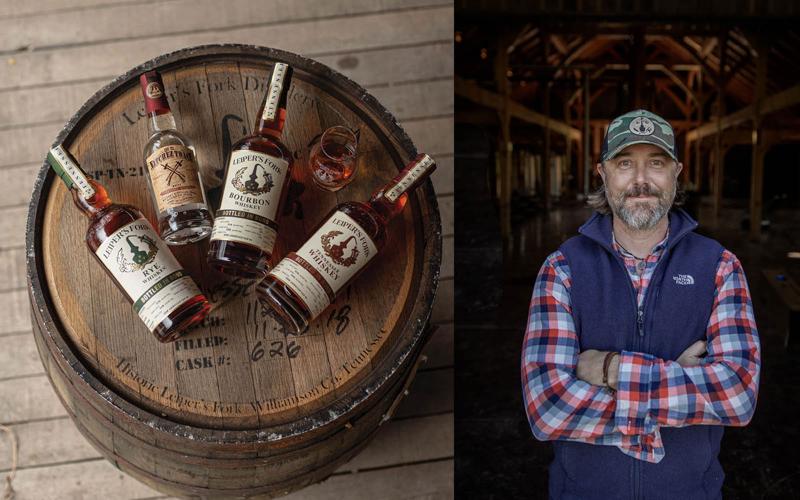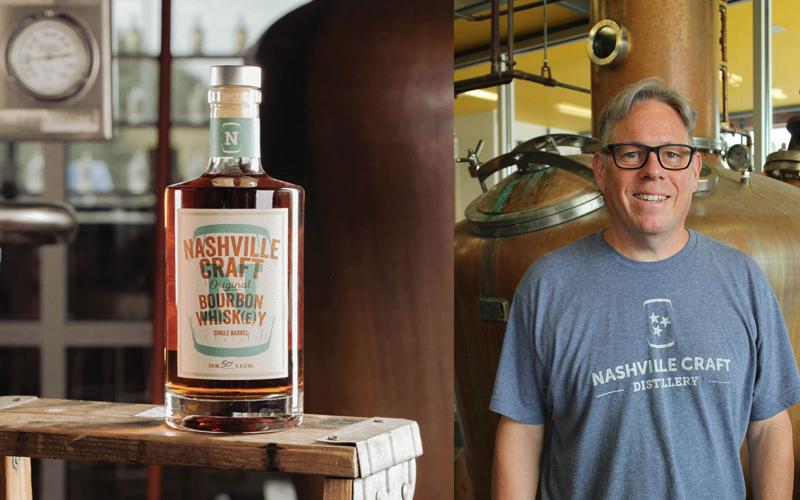From the end of Prohibition until 1997, there were only two distilleries in Tennessee — meaning opportunities to visit a production facility were limited to Jack Daniel’s in Lynchburg and George Dickel in Tullahoma. These two behemoths had the market cornered on spirits tourism and welcomed thousands of visitors yearly.
With the proliferation of smaller distilleries in the state over the past 25 years, whiskey fans now have many more opportunities to explore the spirits production process and meet the personalities behind the brands. As a response to this increased access, the Tennessee Distillers Guild established the Tennessee Whiskey Trail in 2017 to encourage more spirits tourism across the state.
Modeled after the wildly successful Kentucky Bourbon Trail, Tennessee’s whiskey highway has quickly made a massive impact on the economy of the state. Executive director Charity Toombs realized it was time to quantify the anecdotal observations that tourism has increased greatly since the establishment of the Trail.
“We didn’t realize the scope of spirits tourism until we commissioned a study,” says Toombs. “We partnered with Tourism Economics to track the impact of the Trail for 2022.”
The results were staggering. In 2022, visitors spent $2.05 billion at distilleries on the Trail and related off-site establishments like tasting rooms, entertainment venues, restaurants, retail shops and lodging. Add in the direct economic impact of distillery employees, suppliers and operations expenses, and the spirits industry had a $3.45 billion economic impact in the state, including $441.1 million in tax revenue.
More than 8 million people visited Tennessee distilleries during the study period, making the collective industry the second-most-visited attraction in the state — landing beneath the Great Smoky Mountains National Park and above Dollywood. Tennessee distilleries hosted more visitors in 2022 than all the wineries, breweries and distilleries in California combined.
“We’re also impacting many communities that aren’t normally considered tourist destinations,” says Toombs, “and the industry has been a huge revenue generator to at-risk counties, both in agriculture and tourism.
“Now we’re honing into our data to harness it and figure out how to grow from those 8 million visitors,” she continues, “and how to continue to be a strong partner to more than 40 destinations across the state.”
While the Tennessee Whiskey Trail has been integral to the growth of spirits tourism, it was the specific distilleries that made most of the capital investments to welcome more visitors. Even before the Trail started up, Lee Kennedy — president and chief distiller at Leiper’s Fork Distillery — was making the long bet on tourism.

Lee Kennedy, Leiper's Fork Distillery
“When we first started the distillery, we didn’t realize the impact tourism would have on our business,” Kennedy recalls. “We built our distillery with tourism in mind and included an 1820s cabin to house our retail store and tasting room. The interest in whiskey and its production has been growing tremendously in the last decade, and we knew from day one we would be giving tours. We didn’t know what to expect though. In 2016 when we opened, our tourism numbers were double what we expected them to be. Now that we have been operational for seven years and have seen what a great bonus tourism has been, we have invested in an upgraded cocktail bar, outside entertaining areas, etc.”
Nelson’s Green Brier Distillery co-founder and head distiller Andy Nelson saw the growth in visitors and doubled down on his company’s investment. “We recently completed a multimillion-dollar renovation and expansion of our distillery, primarily focused on hospitality and tourism,” says Nelson. “We built a 100-seat restaurant and 22-seat bar, neither of which existed in the facility prior to the expansion, and improved the overall guest experience by rethinking the tour path, tasting room experience and mercantile.”
“The biggest investment we make to encourage tourism to our facility is our membership in the Tennessee Distillers Guild and the Tennessee Whiskey Trail,” says Nashville Craft Distillery president Bruce Boeko. “At the time the Trail launched, we noticed a significant increase in tasting room sales, including tours, tastes and bottle sales. It is hard to know exactly how much that growth can be attributed to the Trail vs. the general increase in tourism around Nashville, but it was evident then and now that the Trail is important to our business.”

Bruce Boeko, Nashville Craft Distillery
This desire to increase visitation isn’t strictly altruistic, though — distilleries seem to see multiple benefits from interacting with their fans.
“Like with the Bourbon Trail, spirits travelers are really showing a strong interest in the personalities of the distillers, and they want to learn the histories of the brands,” says Toombs. “We’ve surveyed guests, and they tell us that they really appreciate visiting the rural communities and seeing the beautiful landscape of Tennessee, as well as meeting the distillers and discovering the craft behind the process. The distilleries are doing a great job at telling their stories and immersing guests into the experience.”
“The financial realities of starting a whiskey distillery from the ground up can be daunting if you’re doing things the hard way,” says Kennedy. “Unlike beer or other spirits, maturing whiskey takes time, which is a burden on the financial resources of a startup distillery. Tourism has helped us weather the initial storm of maturing and aging whiskey by providing a great revenue stream, while at the same time allowing us to create brand awareness. Because of tourism, we were able to get into the black financially a lot sooner than we were anticipating. As a family-owned distillery, that was a tremendous help.”
“As a small craft distillery making our spirits from scratch, having people come to our facility for tastes, tours, cocktails and bottle sales has a huge impact on our ability to operate and grow our business,” Boeko concurs. “During COVID lockdowns, large distilleries did very well, as home consumption was strong, but many small distilleries struggled because a significant percentage of revenue for these companies comes from direct sales to the public.”
“We opened for tours and tastings in 2014, but with a much smaller footprint,” says Nelson. “From the beginning, we had plans for expansion that started with the hope of developing our gift shop and mercantile, but it quickly evolved into a full facility facelift. With revenues from tours and tastings, we were able to fund this expansion, which has already shown to be worth the investment, and most importantly, enabled us to provide an even better and more thorough guest experience.”
Drilling down into the numbers, Toombs has a better idea of who these tourists are and how they contribute to the communities they visit: “These 8 million visitors are mainly coming from more than 40 miles away, so they definitely contribute to ‘heads in beds’ for local hotels. The average consumer takes two years to complete the Trail, because it stretches over 500 miles. We did find a father and son from Wisconsin who completed it in a week, but that’s certainly not the norm! People use the Trail for weekend excursions and can take part in music, nature and culinary experiences that are curated by the Trail and are featured on our website.”
“As our tourism has grown, it has allowed us to not only employ more people, but to grow our ability to enter new markets and service the markets where we were already present in a more impactful way,” says Nelson. “It all becomes this virtuous cycle, so to speak, that really starts with tourism at the beating heart of it all.”







